It is rare that a photographer does not dream of a new lens. The reasons for this are individual. But here is how the focal length correlates with the compression of space in the frame and distortion, and why it is this ratio that needs to be put at the forefront, planning to buy a new lens or choosing from the ones available, not everyone remembers and knows. Let's get acquainted with the opinion of a professional photographer. M.d. Welch is a specially invited author of Lensrentals.
Only after a few days of work on the article, I realized that in detail and carefully discussing the lens models, we completely forget about their nature and behavior in general. Like many photographers, I have already lost track of the time killed by reading and viewing reviews. I was wasting time saving money for the “same” lens, but I didn’t ask myself the main question - what would bring such a focal length exactly to my photo?
As it turned out, I'm not alone. At the Shooting the West photo seminar in Nevada, I had the opportunity to speak to a large group of photographers with a story about the difference in focal lengths and lens behavior. It turned out that many photographers, both beginners and experienced masters, do not always realize why they use this or that lens in different situations, and do not understand that the choice should not be based solely on the distance to the subject or the quality of background blur .
In this article, I will not waste your time comparing the bokeh of different lenses and pixel-by-pixel viewing of frames. I will try to outline some criteria for the focal length of the lens, see how the focal length relates to the compression of space in the frame and distortion, and why this ratio should be put at the forefront, planning to buy a new lens or choosing from available ones.
For me, the first criterion for choosing a lens is the compression of space in the frame, in other words - how much background should be present in the frame behind the subject. To clearly demonstrate the compression of space during portraiture, I asked my good friend and model Travis Stewart to work and not move until I take a few shots. I shot at different focal lengths, trying to make Travis occupy the same part of each frame. 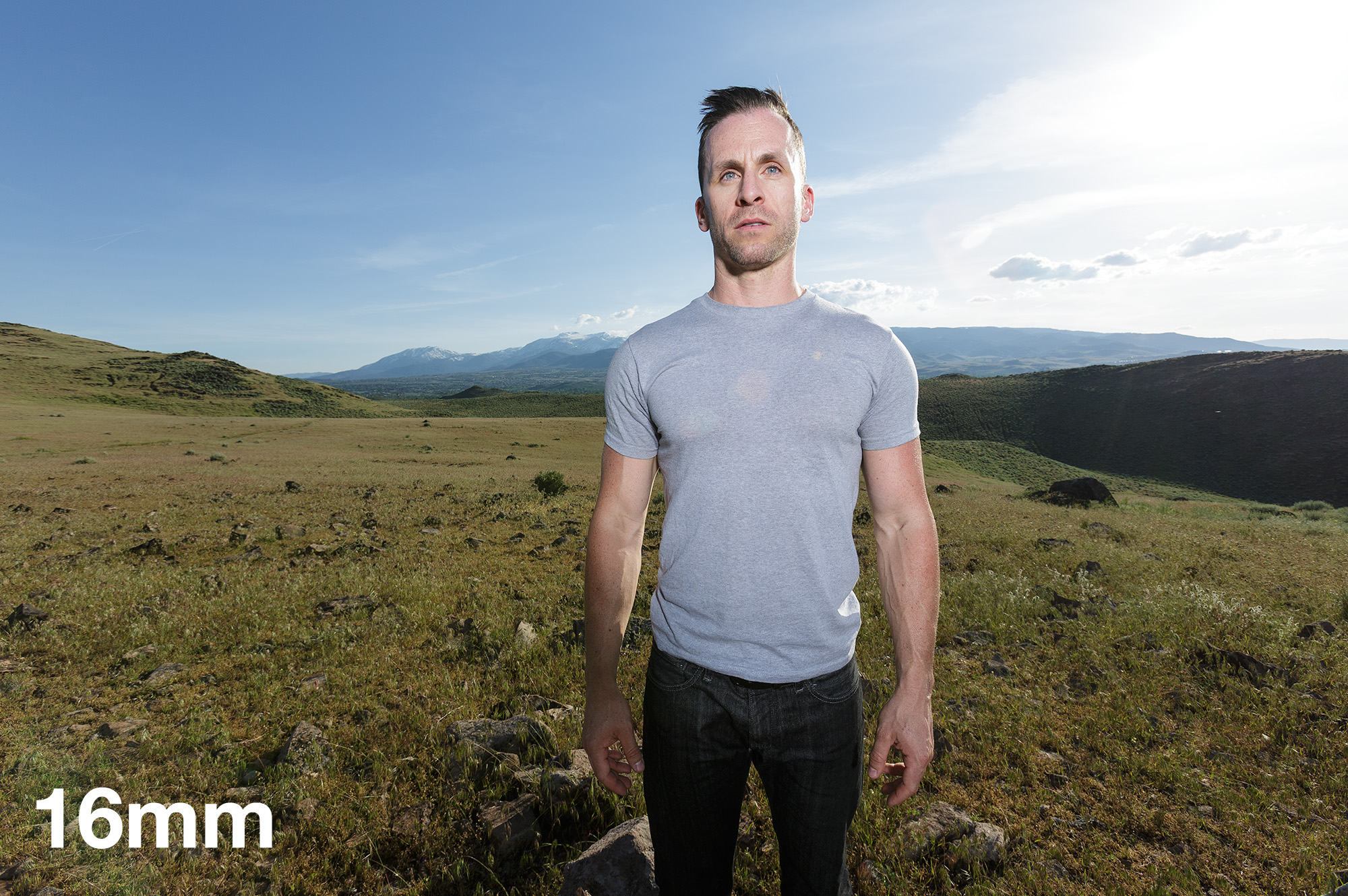
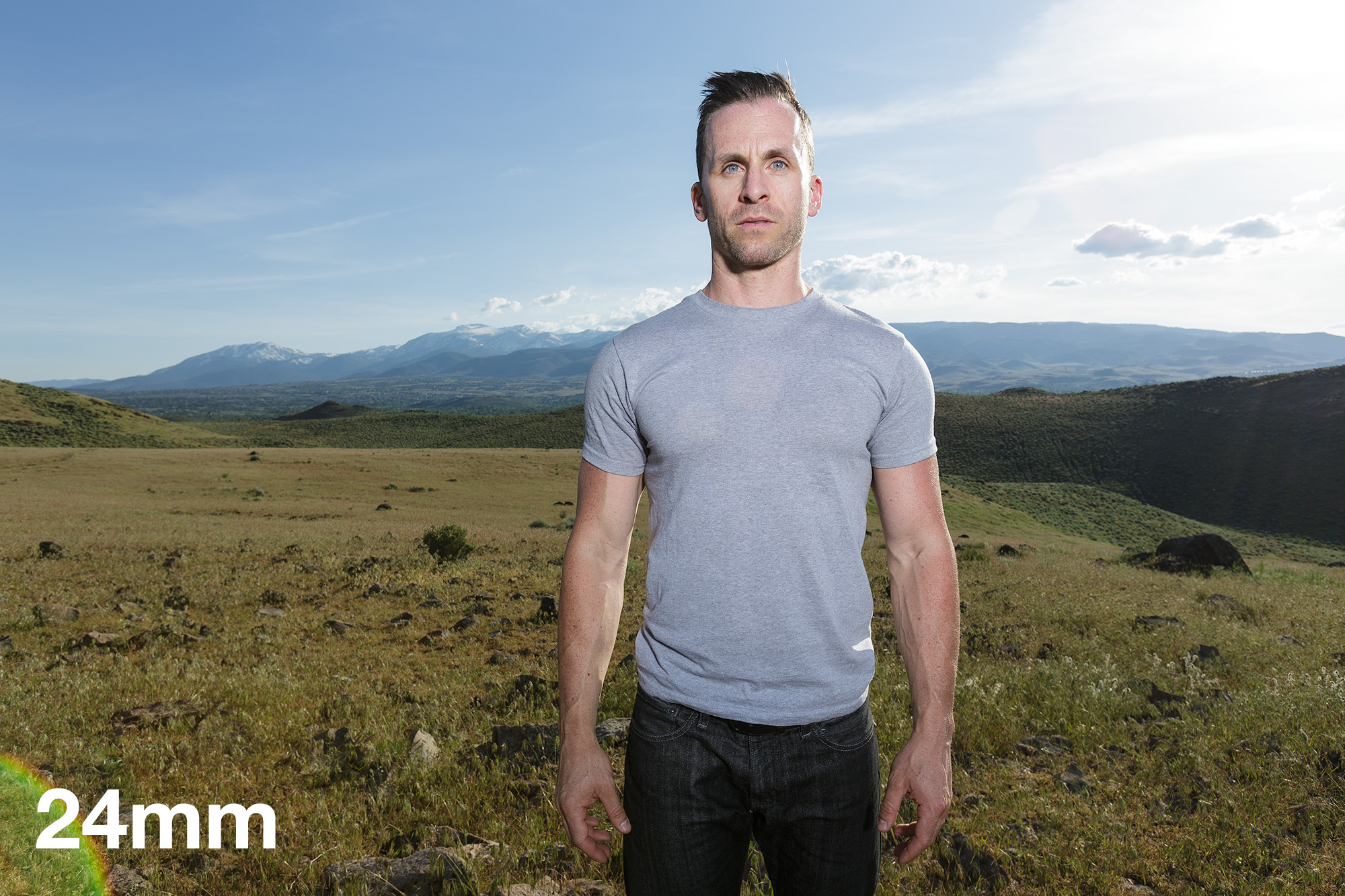
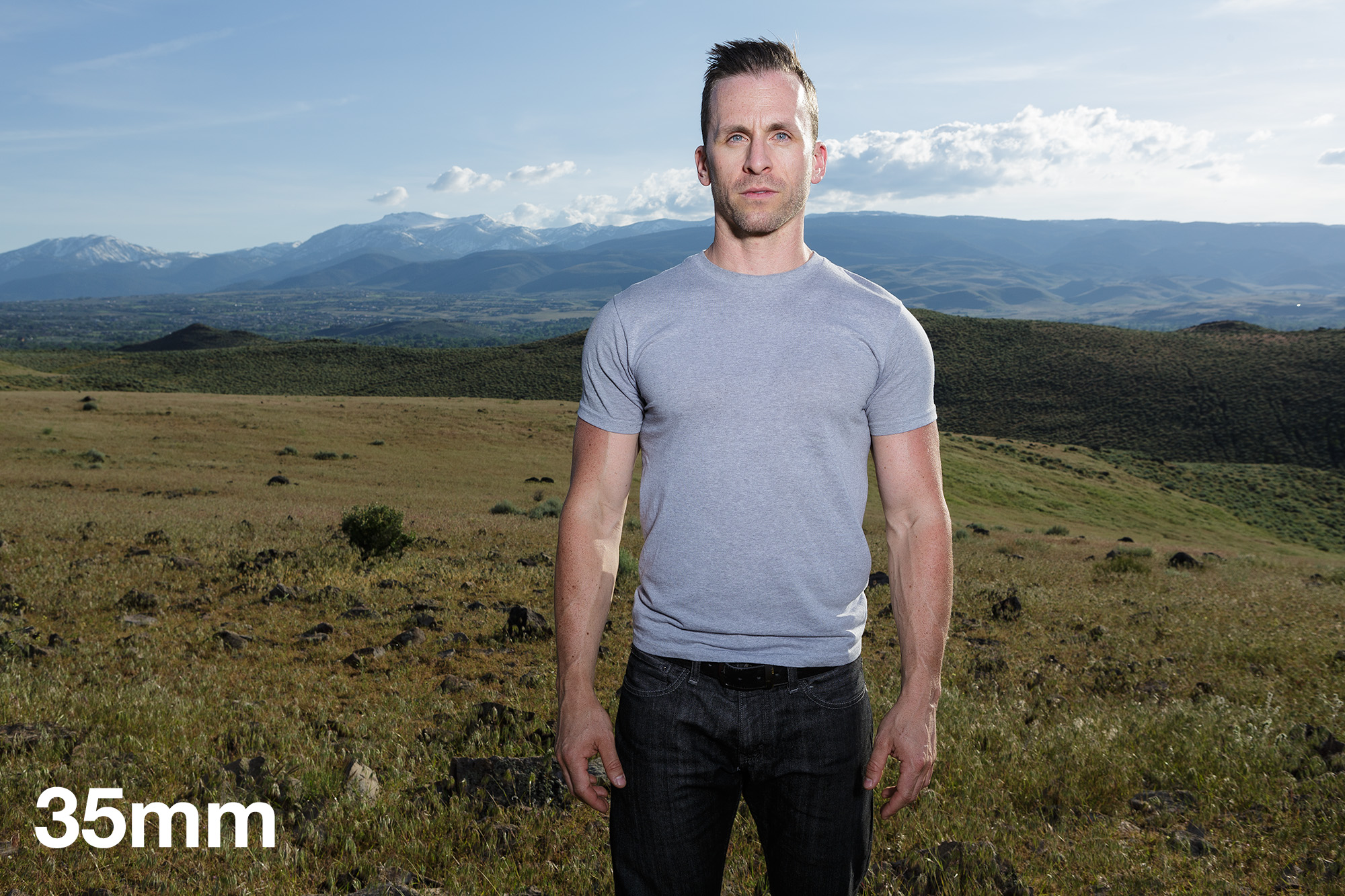
I started with wide-angle lenses, gradually increasing the focal length. Focal lengths of 16 mm, 24 mm and 35 mm are rarely used for portraits, but note how much background is in the frame in this focal range.
Travis, of course, is present, but the frame is obtained not only about him, and such focal lengths are suitable when it is important to show not only the hero, but also his environment, the place where he lives or works. Distortion or perspective distortion is expectedly present at these focal lengths (we will talk about it a bit later), but even at 24 mm the distortion is not so strong as to ruin the picture. You can simply change the composition and, for example, shoot a full-length portrait.
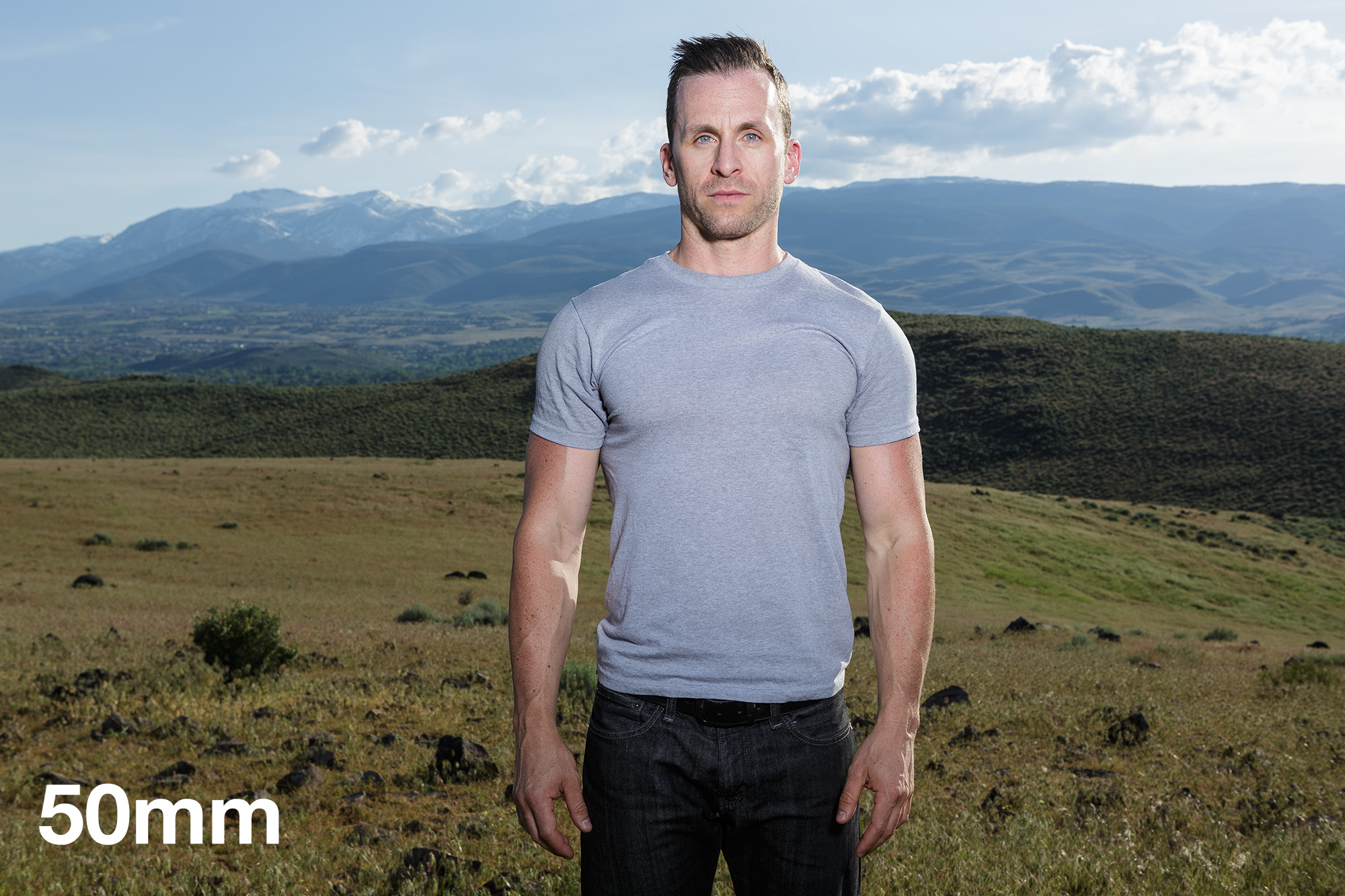
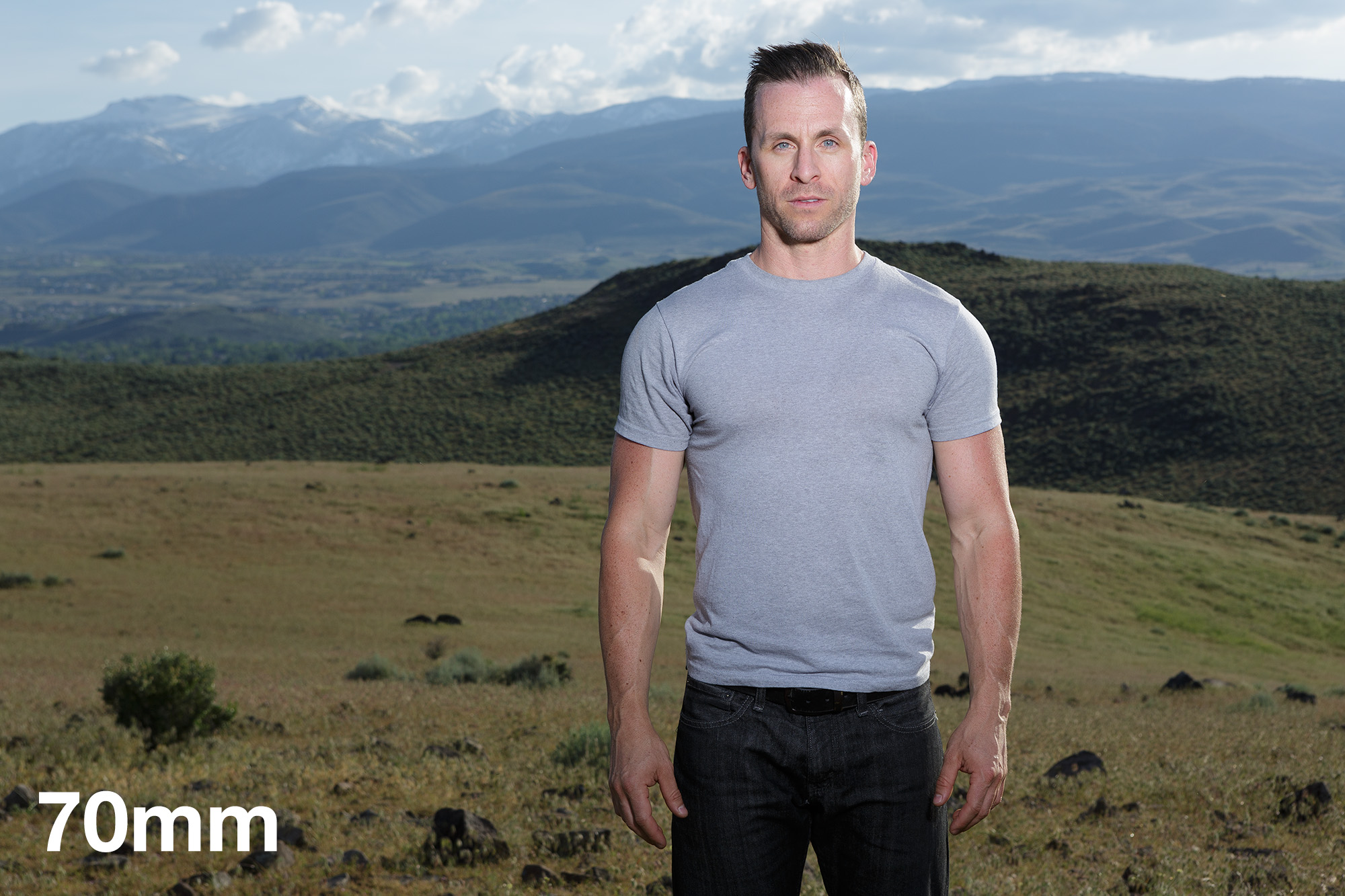
Focal 50 mm and 70 mm are perfectly balanced: Travis is no longer lost in the frame, but stands out - he is “torn” from the background, at the same time there is a considerable part of the landscape surrounding him. These focal lengths are also suitable for cases when you need to show the hero in the environment. 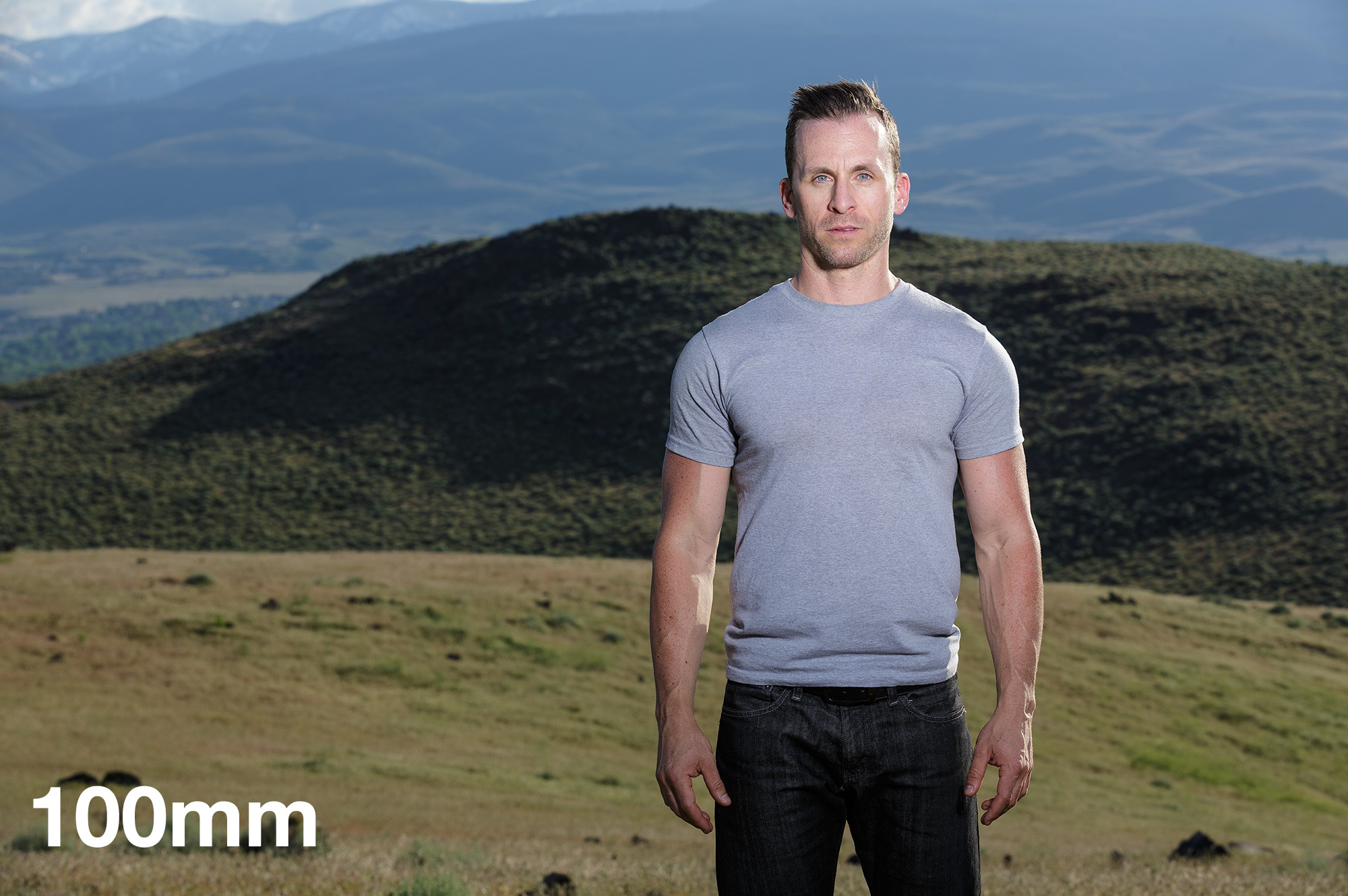
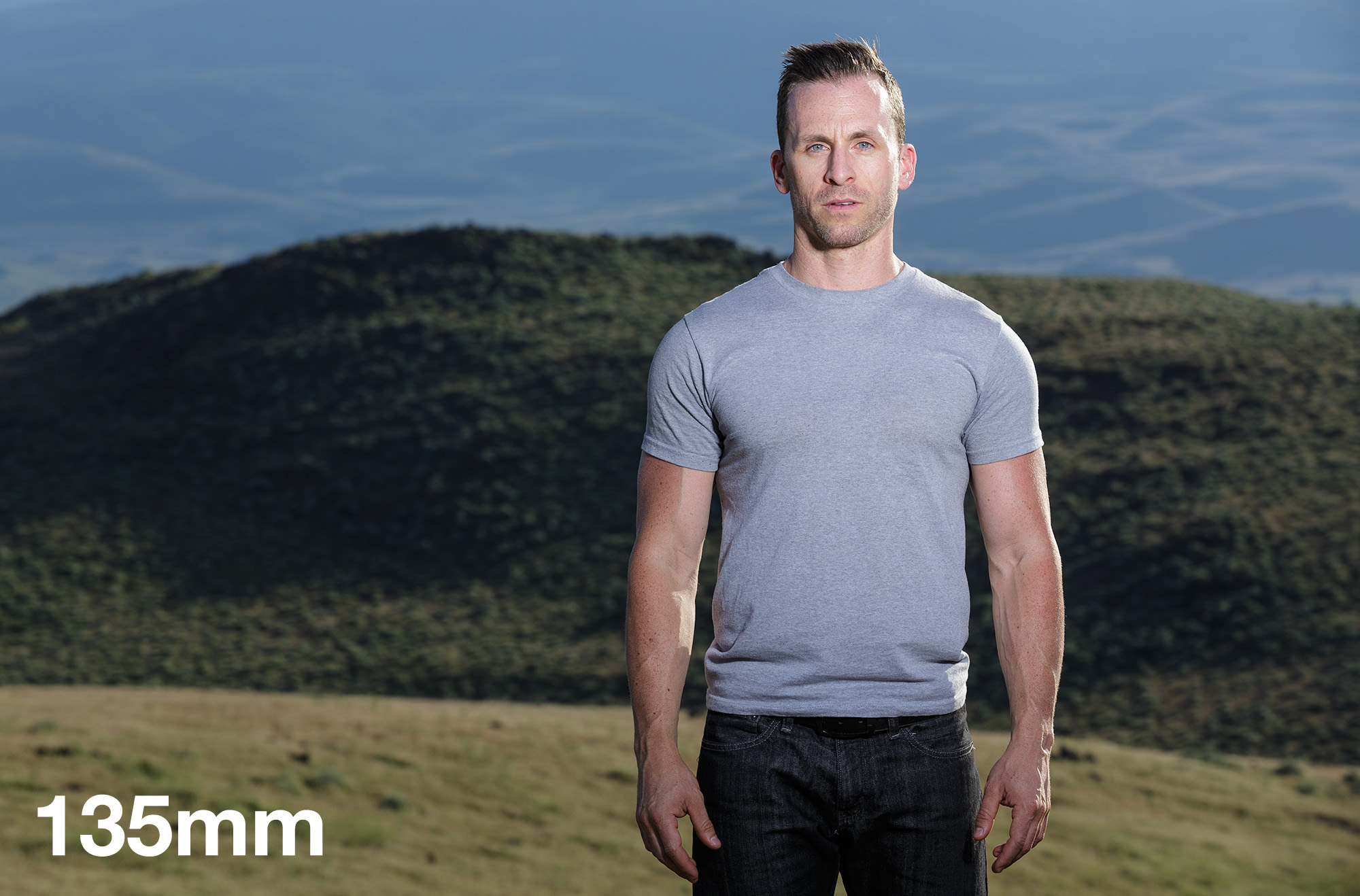
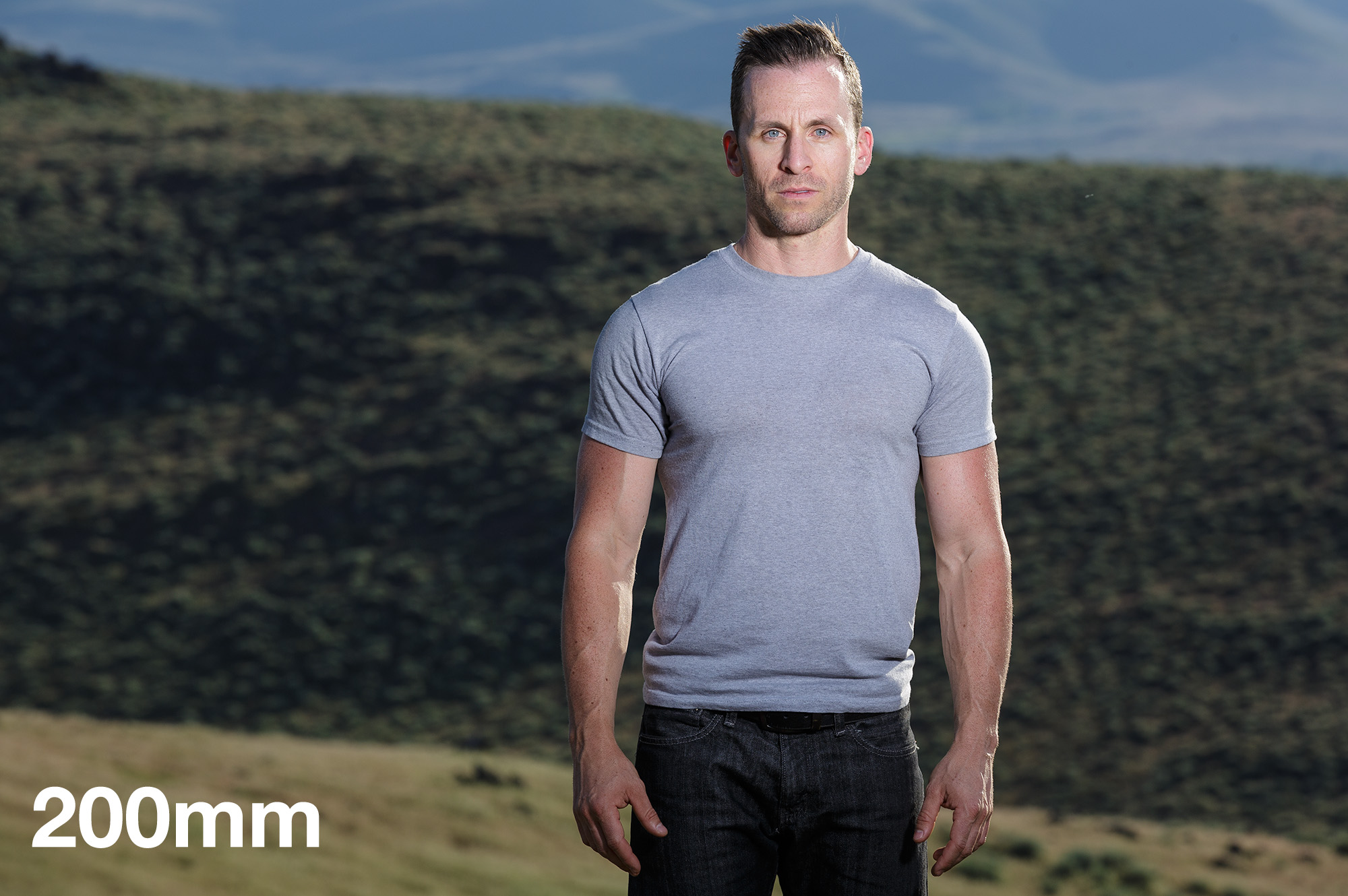
At the focal length of 100 mm, the background is compressed so that the mountain range disappears from the frame, and only the hills are visible right behind Travis. At focal lengths of 135 mm and 200 mm, the hills seem to be closer. At these focal lengths, it seems that the hills are located directly behind Travis, although in fact they are 800 meters, if not more.
Distortion is another criterion by which to evaluate focal lengths. In frames made with focal lengths of 16 and 24 mm, you can see how much it changes the face of the model. For greater clarity, I made a series of facial portraits - distortion will be more noticeable on them. At a wide angle, the distortions make Travis's nose bigger, and his body and face seem to contract and contract. At focal lengths of 50 and 70 mm, distortion decreases, the nose returns to normal size, and the body confirms that the owner spends a lot of time in the gym. 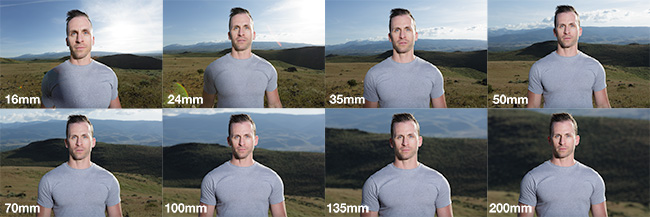
It is because of the distortion that most portrait photographers abandon wide-angle lenses. But here is an example when distortion can help and work on your plan.
I asked Travis to keep a bottle of water in front of me and took a series of shots. At a focal length of 16 mm, a bottle of water looks huge, it is it that becomes the main object and the center of attention of the frame. At a focal length of 200 mm, the size of the bottle is not large at all and does not attract much attention. Imagine that you have two orders: one from a sports team, the second from a manufacturer of sports equipment. An image of an athlete holding a ball on a hand extended towards the camera is required. Incorrectly choosing the focal length, you can completely place accents in the picture. A wide-angle lens, or a lens close to a wide angle, will make the ball bigger and draw attention to it - the ball maker will be satisfied. A telephoto lens focuses on the athlete, albeit with a ball in his hand. 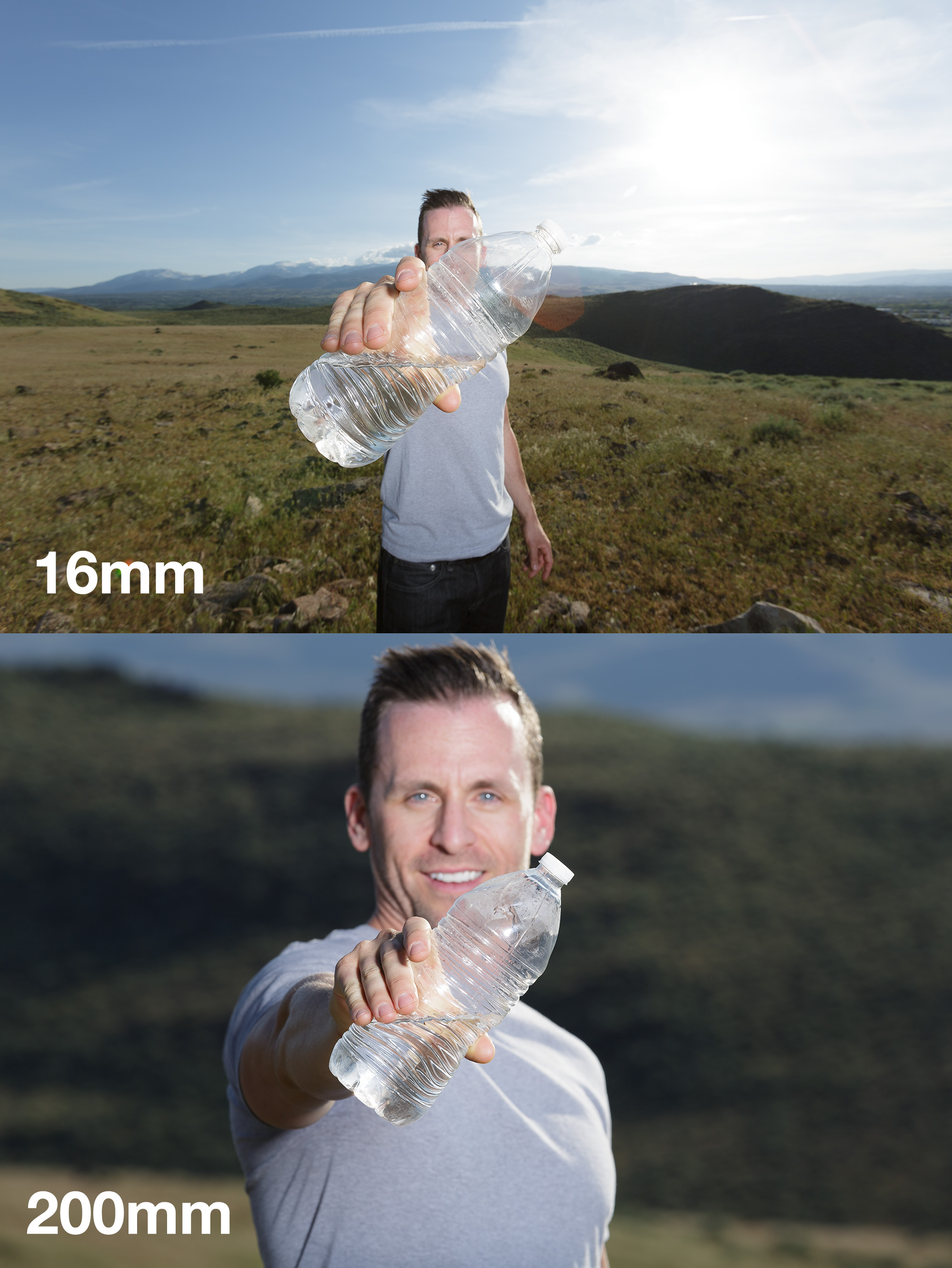
Do not, of course, forget about the ratio of the depth of field and the focal length of the lens. Look at the examples - the depth of field decreases with increasing focal length of the lens. All frames were taken at f / 10. A considerable influence on the depth of field is exerted by the distance from the camera to the subject. In our case, even at a focal length of 16 mm, the background is blurred due to the distance from the camera to Travis.
It is unlikely that I discovered something new, but it was useful to experimentally verify how the focal length of the lens affects not only the distortion and depth of field, but also the space in the frame. Following the results of this exercise, I now use two lenses with a constant focal length - 35 mm and 100 mm as portrait ones.
These are the criteria you need to use when choosing or buying a lens. If you work in a small studio or room, then a telephoto lens will not only help reduce distortion and give good blurring of the background, but also compress the space around the subject. When shooting the owner of the enterprise against the background of the assembly line, it would be wiser to use a lens with focal lengths of 35-70 mm to show the object in its surroundings.
It’s interesting to look at test charts and compare the bokeh of different lenses, but if it’s about work, then make sure that you place accents correctly. ”
M.d. Welch, specially invited author Lensrentals
Choosing a lens for a photographer is even more important than choosing a camera. In this review you will find a description of the focal lengths. from 14mm to 300mm. Each focal length has its own specifics, this must be taken into account when choosing a lens. I think you need to start with a whale lens. You can even use a zoom like 18-135, and only then approach the choice of more specialized optics. This is an individual and creative process.
The optimal focal length depends on:
- shooting genre
- location of filming
- specifics of work
- each photographer’s creative vision
With all this, you can only decide already having a certain experience in photography. Below I will share my observations. All information relates to working with. If you have a camera with crop matrix, multiply the focal length digits by one and a half.
Fish eye
The shot from above is on the lens. This lens provides full coverage of the frame on the crop camera and a circle with black edges on. The angle of view is 180 degrees diagonally. Frames competently made for fisheye look mesmerizing. Feature of this focal length ( come in from 4mm to 15mm) is that it has a very narrow scope. Fisheye - a lens with the widest possible viewing angle, but without distortion correction. As a result, we have rounded lines that should be straight, and a very specific perspective. Such a lens is taken with you for the sake of several bright frames. Using it for a long time is difficult.
14mm
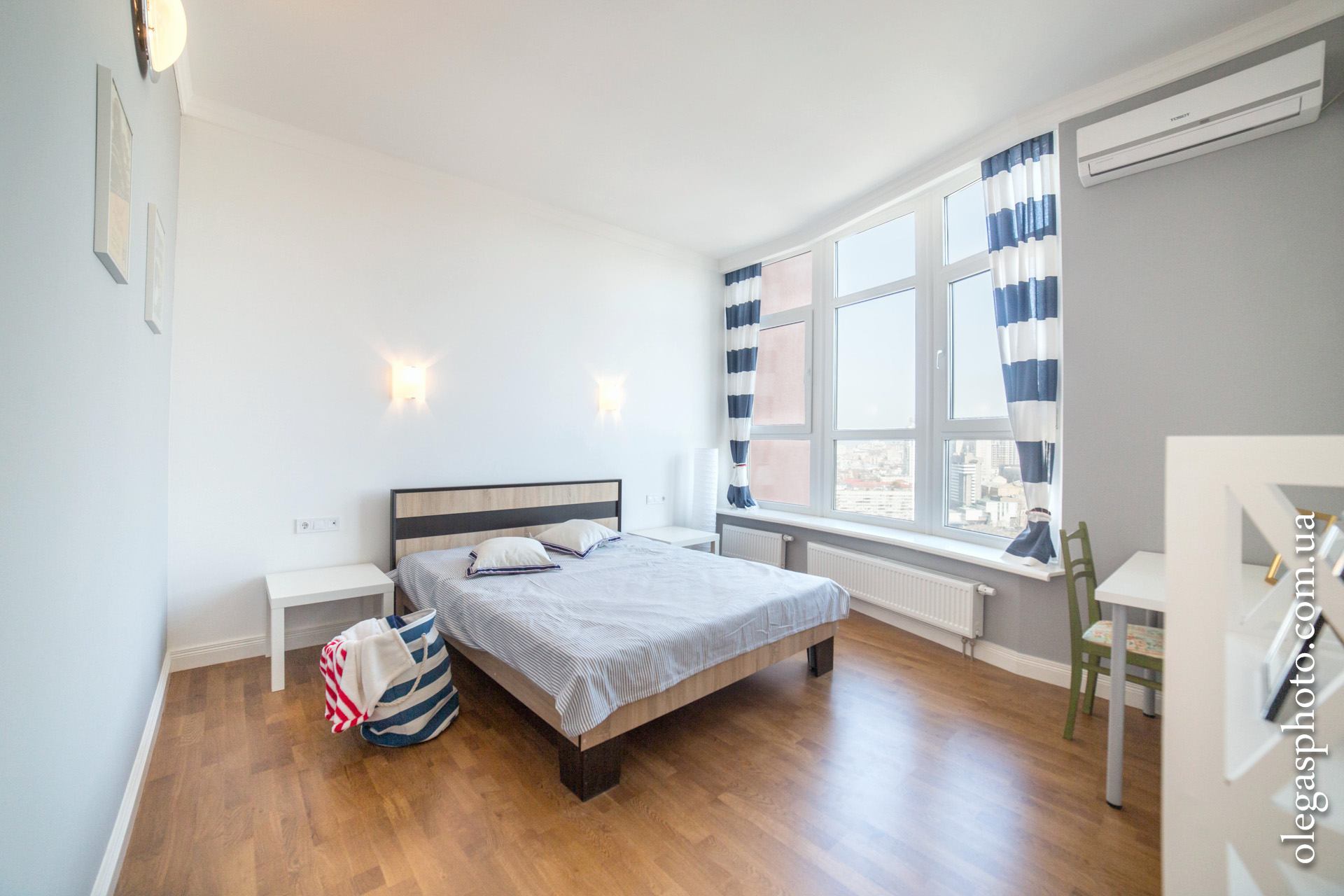
A focal length lens is also very specific. This applies to the geometry of the resulting image. The slightest incorrect tilt of the camera causes severe distortion. This is especially felt at. In nature, the horizon easily collapses. The angle of view is very wide - you need to understand whether you need it. It has advantages: it is possible, for example, to remove the inside of a car entirely; in any cramped room you will not have problems with the viewing angle; in nature you can make interesting panoramas with a voluminous foreground. You can only shoot portraits with such a focal length very carefully and to the full height. In general, shooting people on a lens with such a focal point needs to be extremely thoughtful. This, however, applies to any shooting - here before you take a shot you need to think. A 14mm lens is not an everyday tool.
24mm
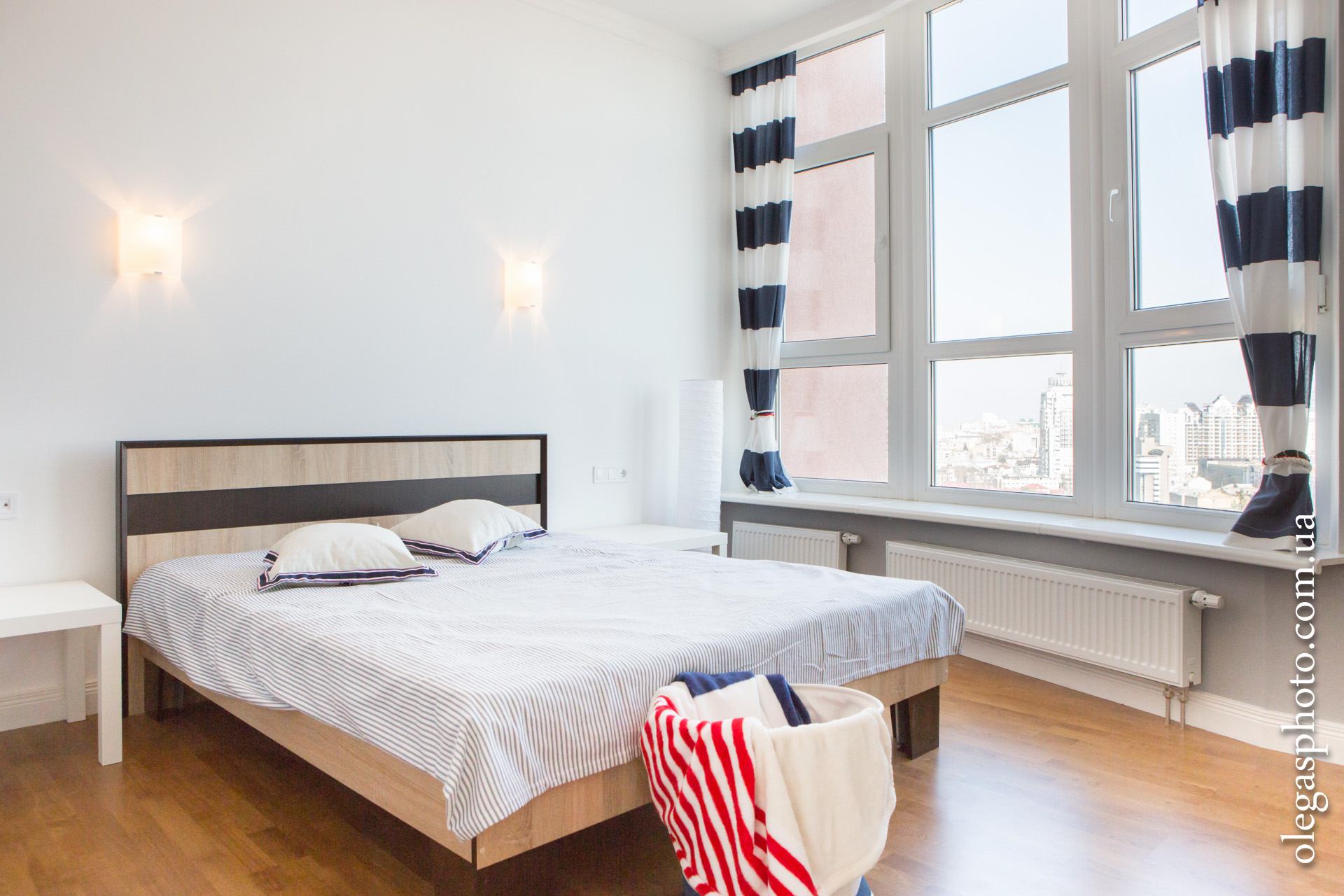
24mm - a fairly wide angle. When working with a wide-angle lens, you always need to think about what should fall into the frame and what should not. This focal length is easier to work with. It does not bend space so much and is more in line with ordinary perception. At 24mm it is very comfortable to shoot indoors. Capturing the entire room will not be a problem. At the same time, geometric distortions are much less pronounced. This is a convenient focal length, you can travel with it (which I would not recommend having only 14 mm), shoot a report inside small rooms, take landscape pictures. For portraits, the 24mm lens is again of little use.
Focal length (FR or ƒ) is the distance between the optical center of the lens and the camera sensor. The larger the focal length, the larger the scale of the image projected by the lens onto the sensor, the smaller the focal length, the smaller the image. We can say that a lens with a large focal length enlarges objects, as if bringing them closer to the photographer, and with a smaller focal length - it reduces, moves objects away.
The focal length determines the angle of the image of the lens (angular field). For a lens with a large focal length, the image angle is narrow - increasing objects, a telephoto lens fills them with the entire frame. A lens with a small focal length, in contrast, has a wide image angle and is able to cover a large amount of space. For example, a lens with a focal length of 50 mm has an angular field of 47 °, and with a focal length of 200 mm, it will provide an overview of only 12 °.
Depending on the focal length and, accordingly, the image angle, three main groups of lenses are distinguished: normal (or standard), telephoto lenses (telephoto lenses), and telephoto lenses (wide angle ones).
Normal lenses, i.e. those that give the image closest in perspective to what the human eye sees have a focal length approximately equal to the diagonal of the frame, or slightly longer. So, the frame of a standard 35 mm film has dimensions 36 x 24 mm, and therefore its diagonal is approximately equal to 43.3 mm. Lenses with a focal length of about 40-60 mm are considered normal. In fact, 50 mm is most often used. This lens is also called "fifty dollars." The angular field of a standard lens lies in the range of 40-60 °.
It has a focal length greater than the diagonal of the frame. Such lenses are used for shooting distant objects, as well as in cases where the background can distract attention from the main subject, and a small angle of the telephoto image is necessary to isolate the object as much as possible, eliminating all superfluous from the frame.
Has a focal length less than the diagonal of the frame. Its large image angle is indispensable when the background is important for the picture and you want to cover more space, emphasizing the perspective and the relationship between the plans.
Telephoto lens - a small angle of the image.
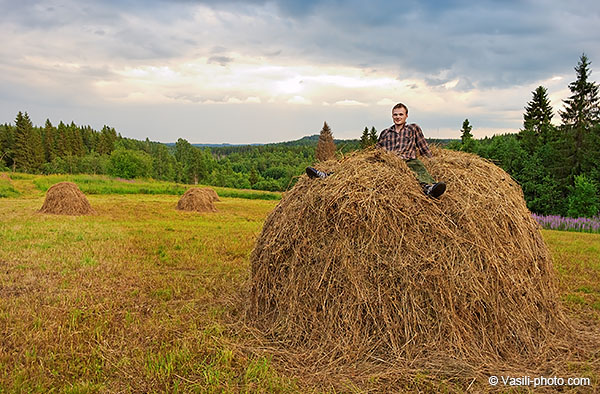
Short-focus lens - wide angle image.
Most commonly used focal lengths
and their corresponding image angles
The numbers in the table are valid for cameras shooting on 35 mm film (format 135), as well as for full-frame digital cameras with a sensor size of 36 x 24 mm (see “Photographic formats”). However, the vast majority of digital cameras are equipped with smaller sensors, and when using them, it is desirable to imagine what the crop factor and equivalent focal length are.
At the present time, zoom lenses — the so-called zoom lenses, zoom lenses, or zoom lenses — have gained widespread popularity. Their convenience and practicality are obvious - one zoom can replace a whole bag of lenses. Of the minuses - the complexity of the design and, as a result, the high cost, large size and weight, as well as lower image quality compared to lenses with a fixed focal length.
Prospect management
The focal length of the lens along with the position of the camera affects the composition and perspective of the picture.
Imagine that you are taking a portrait of a man against the background of any distant objects - let it be a mountain, a forest edge or any man-made structures. We’ll take a few shots using lenses with different focal lengths, but at the same time try to keep the size of the person unchanged relative to the frame size.
When shooting with a normal lens, you will get a frame that has the most natural perspective, with background objects that decrease in proportion to their distance from the person in the foreground.
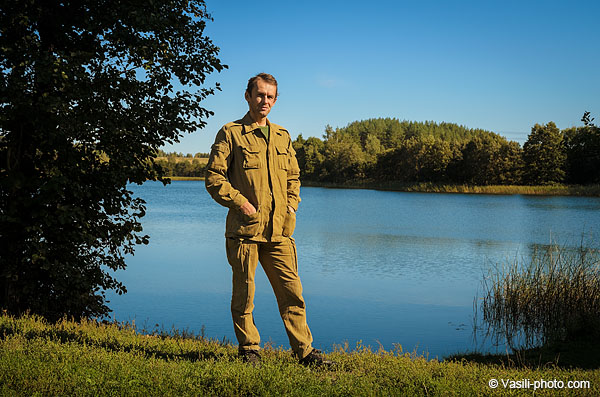
Photo taken with a standard lens.
If you take a telephoto lens, you have to step back to compensate for its magnifying ability and keep the scale of the portrait still. The background objects will increase in scale and will come closer to you. Why? Yes, because moving away an extra ten meters from a person who was originally located five meters from you, you increased the distance between you three times, and the distance to the background, which could be measured in tens, if not hundreds of meters, has not changed. Therefore, they say that telephoto lenses compress plans, eliminating perspective distortions. In fact, the lens has nothing to do with it - it just enlarges the image, not understanding where the background is, but where is the front, but this allows you to shoot an object at a greater distance, reducing the difference between the distances from you to different plans of the scene.
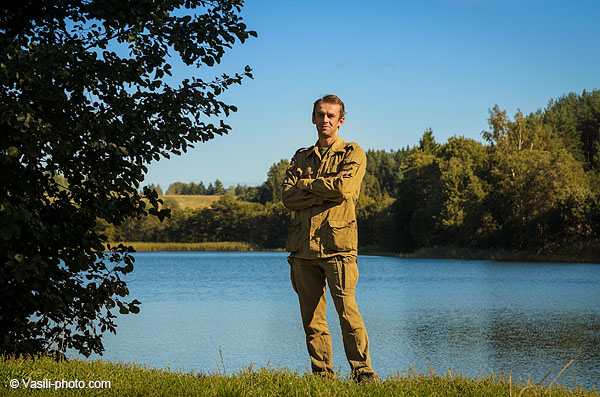
A telephoto lens brings together the foreground and background of the image.
Telephoto lenses are great for taking portraits, as well as for macro photography, because, firstly, they depict all parts of the object at approximately the same scale, and secondly, due to the small angle of view, extraneous background elements can be excluded from the frame. However, telephoto lenses do a great job with landscape photography too, when you want to bring objects that are distant in reality, creating a surrealistic perspective. As for photography, here the telephoto lens is almost indispensable, although it does not save the photographer from the need to get to wild animals as close as possible, and even closer.
Let's go back to our portrait, but now with a wide-angle lens. This time you need to approach a person at a distance of about two and a half meters. The background, which we almost did not come close to, will decrease in size and move back. Now endless expanses are placed in the frame: mountains, forests, and high sky. If you sit down and take a picture from a low point, then your portrait will be a giant, rising above the mountains, and the trees will begin to fall to the center of the frame. The wide angle of the image allows you to capture and emphasize all these promising distortions, but they are created exclusively by the position of the camera and the direction of view. Distortions of the perspective can become both a virtue and a drawback of the frame - decide for yourself in each specific case: to deal with them, or, on the contrary, to aggravate the effect.
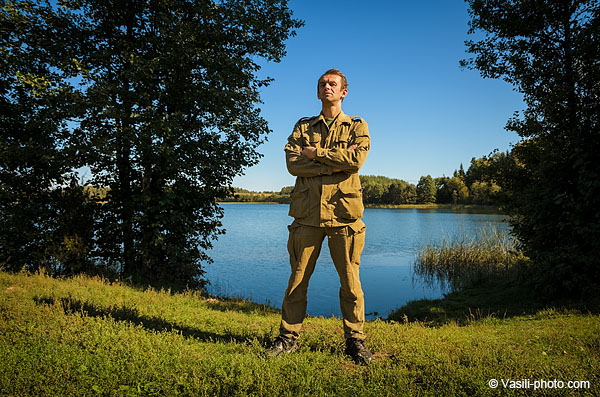
A wide-angle lens emphasizes perspective.
Be especially careful with wide-angle lenses, since allowing you to include a lot of good in the frame, they also make it difficult to exclude foreign objects from the frame. Make a habit, composing a frame, to look around the viewfinder borders in search of various unplanned garbage. Also remember the importance of the foreground. The desire to cover many objects leads to the fact that they all turn out to be small and inexpressive. Try to find some interesting compositional center, so that it attracts the eye to your picture. Get closer - it always improves the pictures. To emphasize the relationship between the plans, it is necessary, first of all, the presence of these plans.
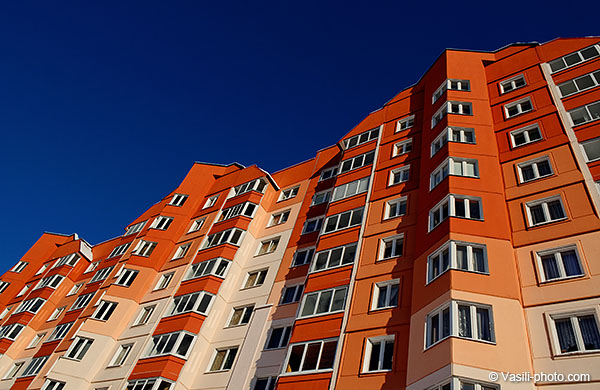
Sometimes perspective distortion is a flaw,
and sometimes dignity.
Wide-angle lenses are not suitable for portraits, firstly, because the wide angle of the image includes too many distracting elements in the background, and secondly, because it forces you to get too close to the subject, and the nose of the model two times closer to the camera than her ears, comes out on a picture twice as large. However, if such a grotesque is to your liking - no one has the right to limit your creative imagination.
Warning
The least correct conclusion that can be drawn by reading the above is that you need to immediately acquire lenses that cover the entire range of focal lengths from 0 mm to infinity. Pathologically wrong! You will look like a walking photographic equipment store, and be sure: at the time of shooting, your camera will always have the most inappropriate lens. You do not need the equipment that you can someday need, but only that without which you can not do. Before buying another lens, make sure that you clearly understand why you need it and what tasks it is intended to solve. Better is one simple lens that you will study perfectly and with which you can mentally see the future frame without looking into the viewfinder, than a dozen expensive pieces of glass in which you will be confused, and whose combined weight will not allow you to walk even a kilometer without shortness of breath. Remember Henri Cartier-Bresson, who for his whole life has not used a lens other than a single fifty dollars.
Believe me, the lens that was sold with your camera is a wonderful lens, and its capabilities are enough to solve 90% of photographic tasks. More expensive lenses will not improve the quality of your shots, but only slightly expand the range of situations in which you can shoot, in the presence of due experience and skill. Are you sure you will die without excess glass? If not, save money better, and spend your time and energy to improve your skills.
Thanks for attention!
Vasily A.
Post scriptum
If the article has been useful and informative for you, you can kindly support the project by contributing to its development. If you did not like the article, but you have thoughts on how to make it better, your criticism will be accepted with no less gratitude.
Do not forget that this article is subject to copyright. Reprinting and quoting are permissible if there is a valid reference to the source, and the text used should not be distorted or modified in any way.
The lens is the distance between the rear main point of the lens and the back focus of the optical system.
As you can see, the academic definition, from the point of view of a simple person, is somewhat confused. Therefore, it is important for an amateur photographer not so much to know the definition of such a certainly important characteristic as the focal length of the lens, but to imagine what this characteristic affects. And it affects the approximation / removal of the subject in the viewfinder / on the screen / in the picture, as well as the perspective.
There are lenses with a variable focal length ("zoom") and lenses with a constant focal length ("fixes"). At the same time, “zooms” are divided into zoom lenses and zoom lenses. Zoom lenses are usually used in cameras with interchangeable lenses, as well as "pseudo-mirrors" (cameras whose focusing principle is similar to ordinary soap dishes, but the appearance itself is similar to SLR cameras). The optical design of such lenses is such that it makes it possible to focus on the entire range of focal lengths declared by the manufacturer for this device. Zoom lenses do not possess such a useful property and allow the owner to shoot only at a certain set of focal lengths. At the same time they are more compact, simpler and cheaper than zoom lenses. But most users of such "glasses" do not even suspect such a restriction. Almost all the “soap dishes” of the low and mid-price range are equipped with zoom lenses.
The focal length of the lens, as a rule, is either present in its name (for interchangeable optics), or simply printed on it with small digits and letters (typical for "soap dishes"). In the latter case, it is very important not to get into trouble, because some manufacturers indicate only the effective focal length of the lens, some indicate only the real, and some indicate both. After the advent of digital cameras, the concept of crop factor came into use by photographers. This is the ratio of linear dimensions to linear dimensions of a standard narrow-film frame (36 mm x 24 mm). All matrices of compact spaces are “cropped”, i.e. their sizes are much smaller than the above linear parameters of the film. Therefore, to determine the so-called effective focal length (such as if you were shooting with an ordinary narrow-film “soap box”), you need to multiply the real focal length of the lens by the crop factor of the matrix. Sometimes this parameter is also called the focal length in 35 mm equivalent. You can find the digital dust collectors from the documentation that comes with the camera, or on the manufacturer’s website. Most likely, the size will look unusual, something like that - 1 / 2.5 ". Further on the Internet you can find tables for determining the crop factor for the most common matrix formats.
By the magnitude of the focal length (usually real, but not effective), lenses are divided into the following categories:
- ultra wide angle (less than 20 mm). As a rule, they serve for landscapes, architecture;
- wide-angle (24-35 mm). Their destiny is shooting indoors, especially small ones, landscapes, group portraits;
- normal (35-70 mm). A person's angle of view is equivalent to a focal length of about 50 mm. Therefore, this category of lenses is most often used for everyday shooting. Photos taken at these focal lengths look natural;
- telephoto (70-135 mm). Such a focal length has the majority of lenses for macro photography, as well as the so-called "portrait" (lenses designed for;
- telephoto lenses (over 135 mm). Everything is clear here - shooting objects far removed from the photographer. Such a lens will be indispensable when shooting sports events, concerts. Or, say, when photo-hunting wild animals.
Of course, such a division of the lenses in terms of focal length is very arbitrary, however, when choosing optics for the camera, even an amateur photographer should take into account what he plans to do with this “glass”.
For a centered optical system consisting of spherical surfaces, describes the ability to collect rays into one point, provided that these rays are coming from infinity by a parallel beam parallel to the optical axis. Wikipedia.org
(instead of introductory joke)
Focal length (hereinafter the DF) is one of the main parameters of the lens. Shows the degree of approximation of the image or the angle of view. The smaller the DF, the wider the viewing angle, and the smaller the approximation. The larger the DF, the narrower the viewing angle, and the larger the approximation.
The focal length is measured in millimeters and is usually indicated on the body and rim of the lens. 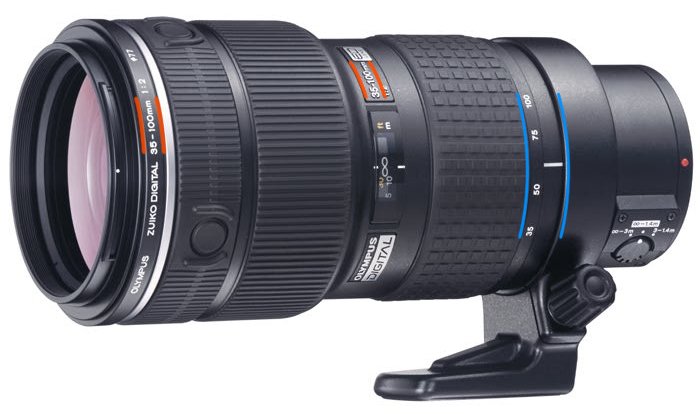
Olympus Zuiko 35-100 / 2
Near the zoom ring (if any) a scale is applied that shows the current focal length.
According to RF, lenses are divided into three main categories:
- Wide angle lenses have a large viewing angle and have FR in the range of 8-28 mm (35mm equivalent).
- Standard lenses have an average viewing angle, familiar to the human eye and have a FR of 28-70 mm (in 35mm equivalent).
- Telephoto lenses(Greek téle - distant, distant) have a narrow viewing angle, possessing a 70-degree fanaticism of manufacturing firms. The standard tele-range is 70-200, 70-300 mm.
The most important feature of the DF is the distortion of the imaged space. The same object, photographed in the same conditions but with different RFs, looks completely different.
Wide-angle lenses, as a rule, stick out the center of the frame and, as it were, “fold” the edges. This effect is called "barrel" or "pillow." Scientifically, this is called “Distortion” or “Spherical aberration.”
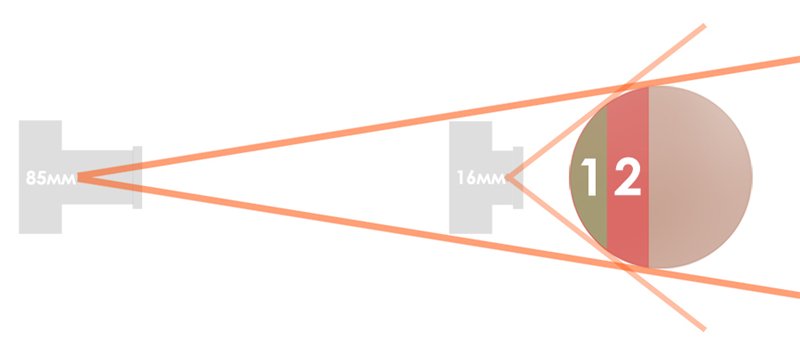
The wide-angle lens captures only the front of the ball (1), sticking out the center of the object. The portrait lens makes the object flatter, showing most of the ball (2).
A vivid example of how the proportions of an object are distorted depending on the change in FR 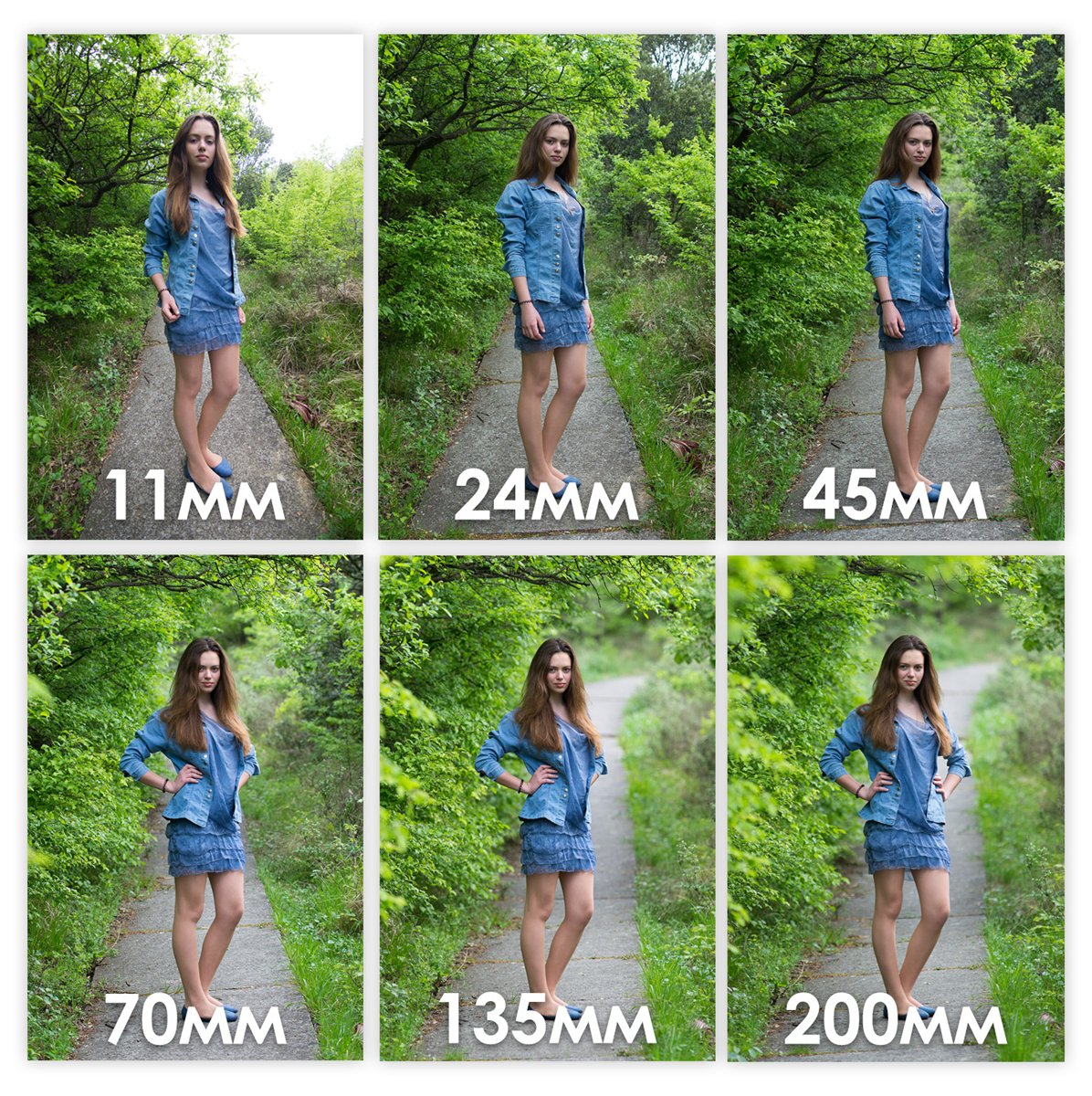
Pay particular attention to the change in the ratio of the background and the subject, the distance between the model and the sections of the path. There is one wrong frame in the sequence. If you understand the essence correctly, you will understand which image does not correspond to the specified FR
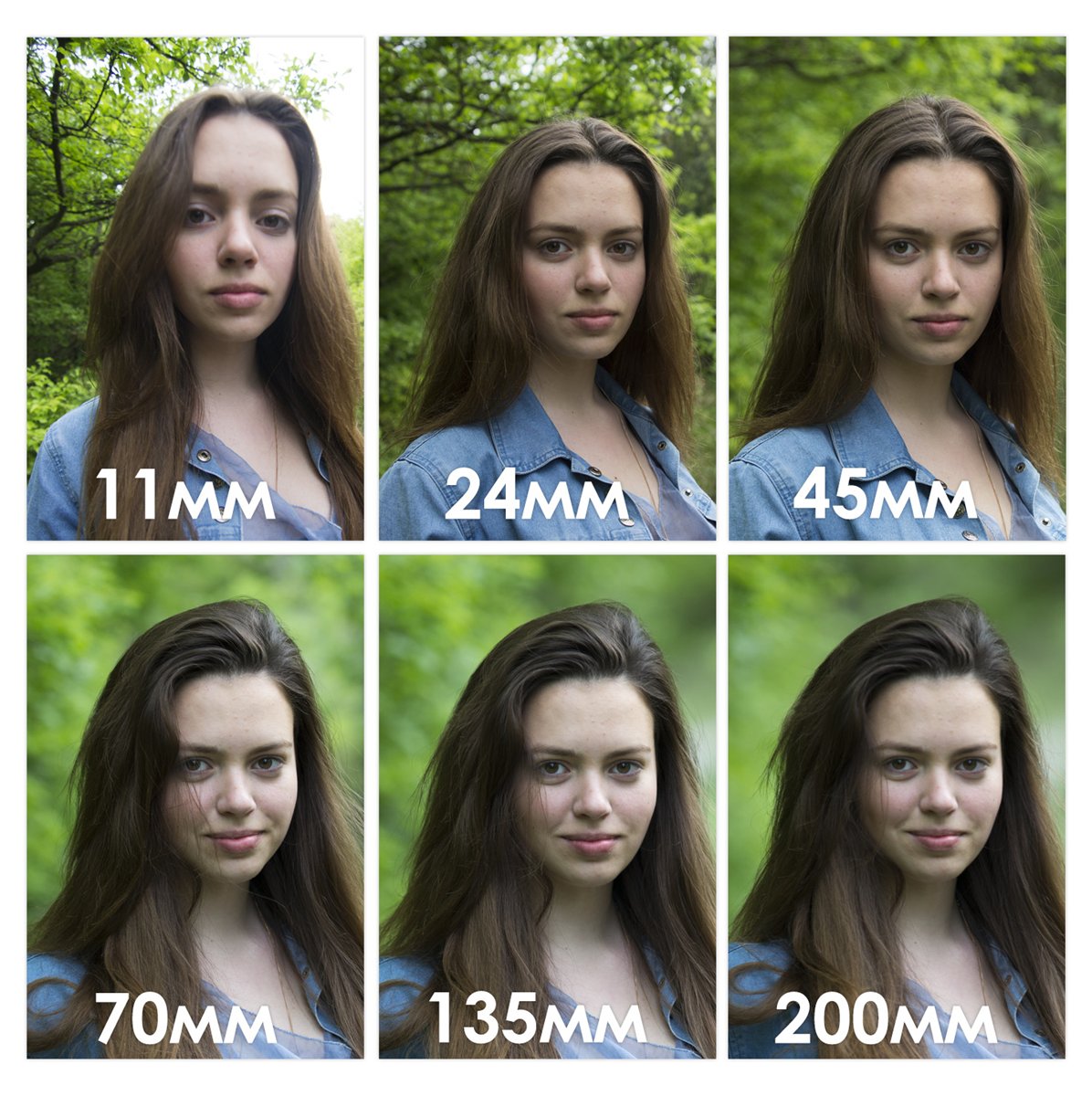
The same, but with a facial portrait
All pictures are taken with the same shutter speed and aperture. 11mm - Tokina 11-16, 24.45mm - Carl Zeiss 24-70 / 2.8, 70,135,200mm - Sony 70-200 / 2.8g.
An important nuance for portrait photography is that when using a telephoto lens, the photographer is far from the model (5-15m). This allows novice models to relax a little. When shooting a large face portrait at 11mm, the distance from the lens to the model's eyes is about 10-20 cm. Not everyone will like this “proximity”.
When shooting with a wide-angle lens, it is difficult to achieve a blurred background and correct proportions. But distortions often bring a special “dynamics” into the frame, and the image from this looks much more “alive”. In most cases, wide-angle lenses are used for shooting landscapes and architecture, so they are called "landscape".
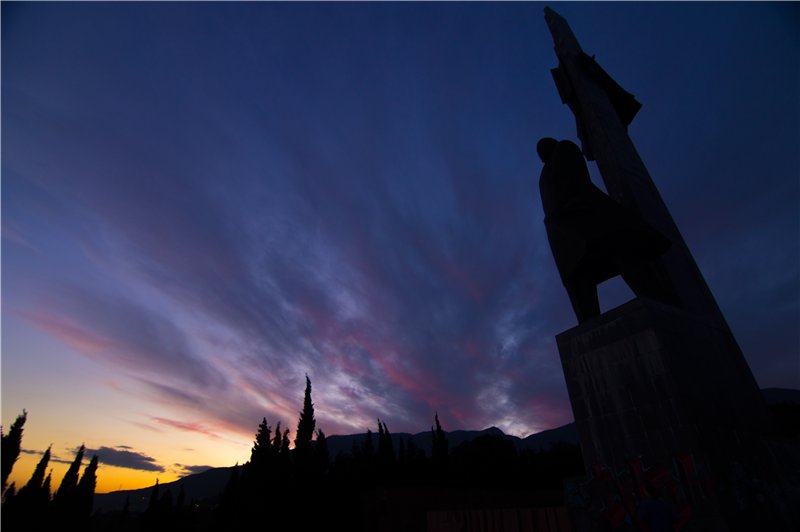
Tokina 11-16 / 2.8
With telephoto lenses it is the opposite. They seem to expand the center of the frame, and the background is pushed back. When shooting with a telephoto lens, it is difficult to achieve a non-blurred background, which makes it difficult to shoot several objects at different distances from the lens. Often telephoto lenses are used to shoot large portraits, so they are called “portrait” or “portrait”.
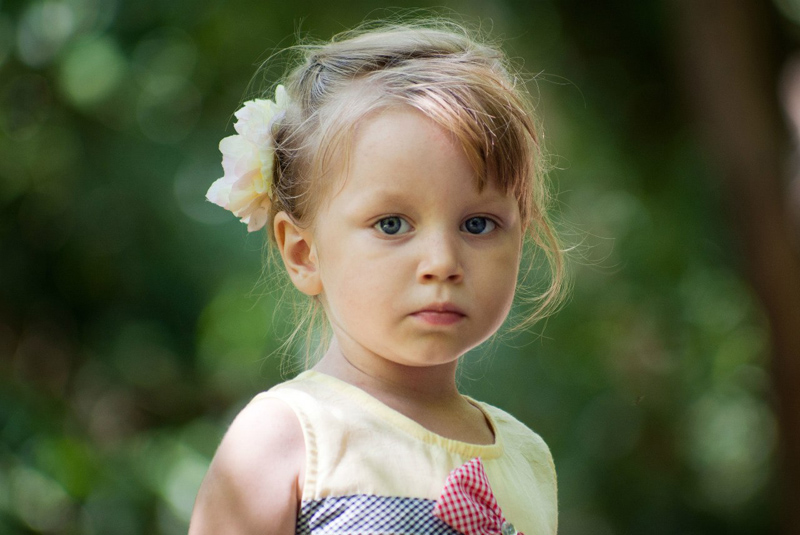
Sigma 75-200 / 2.8-3.5
Standard lenses are somewhere between tele and wide angle lenses.
By focal length, lenses can be divided into FIXES and ZUMA . FIX (eng. Fixed - unchanged) - a lens with a constant RF, and ZOOM - with a variable. With a zoom lens, you can zoom in or out of your subject, but with fixed lenses, the aperture is higher and the picture is more beautiful.
Lenses with fixed FR in the title have only one digit, for example: Canon EF 50mm f/1.8. The zoom lens in the title is always two digits. For example, PENTAX DA 50-135 F / 2.8 ED. The first digit is the minimum possible DF, the second is the maximum possible.
Argued that the magnitude of the zoom shows how much the lens can zoom in, but it is not. Zoom is the ratio of the maximum FR to the minimum. For example, take two lenses: 18-55 and 70-210. Their zooms are respectively equal to:
That is, both lenses have a triple zoom. Or their zoom is x3.
Argued that the larger the zoom ratio, the worse the final picture. This is true when it comes to entry-level lenses. Zoom High-end class demonstrate excellent picture, but the price tag they are not democratic.
Disputes about what is better “Fixes or zooms” are similar to disputes “VAZ or Chinese cars” or closer to the Canon VS Nikon photography community. Everyone must choose their position. Although it is obvious that the correct position in this matter can not be.

Registration of premises in kindergarten: reception room, bedroom, changing room, music room
Cinema-quality image settings
Images mdf mds. How to open mdf file
What to do to not want to eat
Conditionals in English